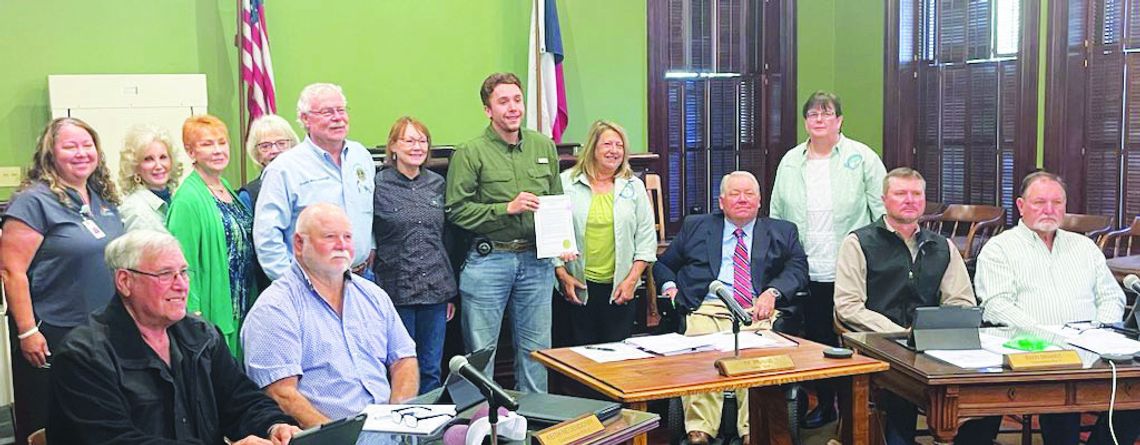Vice President of Communications for The Wellness Council of Greater Colorado Valley
Post Traumatic Stress Disorder is a term familiar to many people, but not everyone is aware that there are many myths and assumptions about this disorder. Here are some facts to clarify the facts from the myths about PTSD.
- PTSD is a mental health stress response to experiencing or witnessing a traumatic life event. That means that both children and adults can experience PTSD.
- Most of us immediately assign this condition to our military veterans. While it is true that some individuals serving in the military, and particularly those in combat, do suffer from PTSD, it is by no means the only group of people who encounter this type of stress response.
- PTSD can occur from experiencing any single or ongoing traumatic or terrifying event at any point in your life, such as a bad car accident, being part of or witnessing any type of violence, sexual, verbal, mental or physical assault, and natural disasters are examples of traumas that may trigger a PTSD response.
We know that the brain is very powerful and how each individual processes an event varies widely. The body has a natural response to traumatic events which may include: - Heart rate and anxiety increase - Senses and emotions are magnified.
- Difficulty sleeping or trouble settling afterwards.
These types of responses are completely normal, but they’re meant to be temporary. Unfortunately for some individuals, the symptoms don’t subside or go away on their own, or they may surface again down the road. A person may have developed PTSD when this happens.
Every Response Is Not The Same The intensity of PTSD symptoms may vary from person to person. Things like how long the trauma goes on, relationship to individuals involved, whether the individual had any way of escaping the situation, or whether the event occurred from a close friend or family member all play a role in the intensity of the response and often the symptoms. There is no set timeline for when someone will develop PTSD and no certainty that it will occur. It may occur immediately after an event, months, or even years down the road or not at all.
Complex PTSD (C-PTSD) A new diagnosis, C-PTSD, came about when doctors noticed that certain types of events more often resulted in certain responses and symptoms. Childhood trauma, repetitive or multiple traumas, situations lasting a long time, or in which escape, or rescue is unlikely, or if the harm comes from someone close, like a family member, may result in C-PTSD.
The symptoms for C-PTSD are most often characterized by difficulty regulating emotions, emotional flashbacks and nightmares, and having a harder time developing and sustaining relationships. These symptoms can last a lifetime and are often misdiagnosed.
The good news is that therapists and counselors are now being more focused on traumas in a client’s life, as opposed to simply giving a quick diagnosis like mild depression or social anxiety, etc.
Symptoms Vary
Symptoms associated with PTSD are as varied as the circumstances of the type of trauma. An individual may feel alone or detached or have negative beliefs about themselves or others. They may lose interest in activities, have angry outbursts or be irritable.
Some may feel worried, guilty, scared or be hyper- vigilant or get startled easily in certain situations. Chaotic, loud, or crowded environments may be challenging. Concentration and memory issues are also common. Some may have physical pain, or stomach aches.
Again, there is no one size or symptom that fits all.
Important Facts To Know About PTSD - First, it is not a sign of weakness, nor is asking for help. Mental Health professionals still do not know why one person suffers from PTSD and another does not. Research is just beginning to understand the interactions between biological, psychological, and social factors affecting the development of PTSD.
- Secondly, not everyone’s symptoms and triggers are the same, so it’s unproductive to compare one person or situation to another.
- Thirdly, there is no truth to the belief that that all people with PTSD are violent. In fact, many who suffer retreat into themselves and shy away from other people and events.
- There is still a lot to learn about PTSD, however, one of the most important things known is that talking about a traumatic event early, learning to manage the stress associated with it and getting help is critical. We know that symptoms that persist for longer than a year are unlikely to go away on their own.
Help Is Available RESOURCES
National Center for PTSD: https://www.samhsa. gov/ resource/dbhis/ national- center-ptsd ht tps:// www. pt sd. va.gov/ https://adaa.org/under standing- anxiety/ post traumatic-stress-disorderptsd/ resources https:// my. cleveland clinic.org/health/ diseases/ 24881- cptsdcomplex- ptsd
.jpg)



